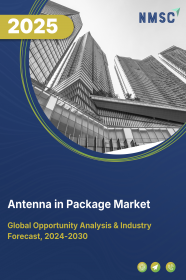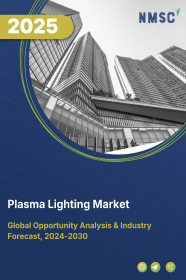Semiconductor Packing Market by Type (Embedded Die, Flip-Chip, Fan-In WLP, Fan-Out WLP), Packaging Material (Organic Substrate, Lead frame, Bonding Wire, Ceramic Package, Die Attach Material, and Others), Wafer Material (Simple Semiconductor, and Compound Semiconductor), Technology (Grid Array, Small Outline Package, Flat No-Leads Packages, Dual In-Line Package, and Others), and Others - Global Opportunity Analysis and Industry Forecast 2024-2030
US Tariff Impact on Semiconductor Packing Market
Trump Tariffs Are Reshaping Global Business
Market Definition
The Semiconductor Packing Market size was valued at USD 34.59 billion in 2023 and is predicted to reach USD 64.22 billion by 2030 with a CAGR of 9.3% from 2024-2030. Semiconductor packaging refers to the process of enclosing or encapsulating a semiconductor device or integrated circuit (IC) in a protective package that provides electrical connections to the outside world. The packaging serves several important functions, including protecting the semiconductor device from damage, dissipating heat generated by the device, and providing a means for electrical connections to the device. Semiconductor packaging plays a critical role in the performance, reliability, and longevity of electronic devices.
Market Dynamics and Trends
The rapid evolution of technologies including 5G, artificial intelligence (AI), augmented reality (AR), and virtual reality (VR) has led to a surge in demand for semiconductors capable of delivering greater processing power, faster data transfer speeds, and enhanced functionality. To meet these demands, advanced semiconductor packaging techniques such as 3D packaging, heterogeneous integration, and fan-out wafer-level packaging (FOWLP) have emerged as crucial solutions. Additionally, continuous advancements in semiconductor packaging technologies, including through-silicon via (TSV), system-in-package (SiP), wafer-level packaging (WLP), and flip-chip packaging, have enabled manufacturers to achieve higher levels of integration, performance, and efficiency. These advancements not only cater to the increasing technological requirements but also drive market growth by offering more sophisticated packaging solutions.
Moreover, as semiconductor manufacturers concentrate more on design and fabrication, there is a growing reliance on outsourced semiconductor assembly and test (OSAT) providers for packaging services. This trend is fueling the expansion of the semiconductor packaging market, with OSAT companies offering a diverse range of packaging solutions tailored to meet specific customer requirements. Overall, these factors collectively contribute to the growth and evolution of the semiconductor packaging market.
However, advanced packaging techniques requires specialized equipment and materials, which can increase the manufacturing expenses. High costs can deter investment in new packaging technologies and limit adoption, especially for smaller manufacturers or those operating in cost-sensitive markets, restricting the market growth. On the contrary, the demand for environmentally sustainable packaging solutions is creating opportunities for companies that can develop packaging solutions using biodegradable materials and other sustainable alternatives, which is expected to be a significant trend in the industry in future.
Market Segmentation and Scope of Study
The global semiconductor packing market is segmented on the basis of type, packaging material, wafer material, technology, end user, and geography. Based on type, the market is classified into embedded die, flip-chip, fan-in WLP, fan-out WLP. Based on packaging material, the market is segmented into organic substrate, lead frame, bonding wire, ceramic package, die attach material, and others. On the basis of wafer material, the market is categorized into simple semiconductor, and compound semiconductor. Based on technology, the market is divided into grid array, small outline package, flat no-leads packages, dual in-line package, and others. Based on end-user, the market is classified into consumer electronics, automotive, healthcare, it & telecommunication, aerospace & defense, and others. Geographical breakdown and analysis of each of the aforesaid classification includes regions comprising of North America, Europe, Asia-Pacific, and RoW.
Geographical Analysis
Asia Pacific dominates the global semiconductor packing market and is potently expected to remain dominant throughout the forecast period. This is attributed to the increasing use of electronic devices such as smartphones, tablets, laptops, and gaming consoles in this region. The growing automotive industry in the Asia Pacific region is a significant driver of demand for semiconductor packaging. This is particularly evident in applications such as advanced driver assistance systems (ADAS), infotainment systems, and electric vehicles (EVs). The region's automotive sector, specifically in countries including China, Japan, Korea, and India, has experienced substantial growth in recent years.
According to Global Data, Asia-Pacific's Light Vehicle (LV) production surged by nearly 10% year-on-year (YoY) in 2023, reaching a record-high level of 51.8 million units. This growth can be attributed to the robust pace of production in major automotive manufacturing hubs such as China and Japan, with significant contributions from Korea and India as well. Furthermore, strong exports played a pivotal role in driving production growth, particularly in China, which emerged as the world's largest vehicle exporter in the same period. This trend underscores the importance of semiconductor packaging in enabling the functionality and performance of essential automotive electronics, thereby driving growth in the semiconductor packaging market. In addition, Asia Pacific is known for its cost-effective manufacturing capabilities, particularly in China which is making it an attractive destination for semiconductor packaging companies to set up manufacturing facilities and meet the growing demand for semiconductor packaging in the region.
Furthermore, governments of several countries including China, Japan and South Korea in the Asia Pacific region are providing support for the development of the semiconductor packaging industry through funding and favorable policies, which is driving the growth of the industry. For example, in June 2021, the Ministry of Science and ICT announced that the Artificial Intelligence Industry Cluster Agency and five South Korean data centre companies, including Naver Cloud, Douzone Bizon, Kakao Enterprise, NHN, and KT, signed a memorandum of understanding with local server chip companies SK Telecom, Rebellions, FuriosaAI, and the Electronics and Telecommunications Research Institute for extending the use of locally developed AI semiconductors in data centers.
On the other hand, North America shows a substantial growth in the global semiconductor packing market due to the increasing adoption of electric vehicles in the region. This is driving the demand for advanced semiconductors, including power modules and sensors, which require advanced packaging solutions. Moreover, North America is home to many major semiconductor companies, such as Intel, Qualcomm, and Texas Instruments, which are driving the demand for semiconductor packaging in the region. For instance, in August 2022, Intel introduced a new era in chipmaking technologies and their significance by showcasing the most recent architectural and packaging advancements that enable 2.5D and 3D tile-based chip designs. By 2030, Intel aims to increase the number of transistors on a chip from 100 billion to one trillion owing to its system foundry model's improved packaging.
Competitive Landscape
The semiconductor packing market includes several market players, such as ASE Group, Amkor Technology, Jiangsu Changjiang Electronics Technology Co. Ltd (JCET), Siliconware Precision Industries Co. Ltd., Powertech Technology Inc., Fujitsu Ltd., Intel Corporation, ChipMOS Technologies, Inc., Texas Instruments, and Qualcomm Technologies, Inc. These market players are adopting various strategies including business investments and product launches across various regions to maintain their dominance in in the global pea protein market.
For Instance, in July 2022, ChipMOS Technologies Inc. agreed to spend USD 418.2 million on Taiwan capacity expansion, according to the Ministry of Economic Affairs, which accepted the driver IC and memory chip test and packager's petition to join in a g programme. The capacity expansion would allow ChipMOS to seek new business opportunities in the 5G and automotive industries, which would leverage semiconductor packaging solutions.
Moreover, in June 2022, ASE launched VIPack, an advanced packaging platform designed to enable vertically integrated package solutions. The platform enables companies to achieve unparalleled innovation when integrating several chips within a single package. This is achieved by utilising advanced redistribution layer (RDL) methods, embedded integration, and 2.5D and 3D technologies.
Key Benefits
-
The semiconductor packing market report provides the quantitative analysis of the current market and estimations through 2024-2030 that assists in identifying the prevailing market opportunities to capitalize on.
-
The study comprises a deep dive analysis of the semiconductor packing market trend including the current and future trends for depicting the prevalent investment pockets in the market.
-
The information related to key drivers, restraints and opportunities and their impact on the semiconductor packing market is provided in the report.
-
The competitive analysis of the market players along with their market share in the semiconductor packing market is mentioned.
-
The SWOT analysis and Porters Five Forces model is elaborated in the study.
-
Value chain analysis in the market study provides a clear picture of the stakeholders’ roles.
Key Market Segments
By Type
-
Embedded Die
-
Flip-Chip
-
Fan-In WLP
-
Fan-Out WLP
By Packaging Material
-
Organic Substrate
-
Lead frame
-
Bonding Wire
-
Ceramic Package
-
Die Attach Material
-
Others
By Wafer Material
-
Simple Semiconductor
-
Compound Semiconductor
By Technology
-
Grid Array
-
Small Outline Package
-
Flat No-Leads Packages
-
Dual In-Line Package
-
Others
By End User
-
Consumer Electronics
-
Automotive
-
Healthcare
-
IT & Telecommunication
-
Aerospace & Defense
-
Others
By Region
-
North America
-
The U.S.
-
Canada
-
Mexico
-
-
Europe
-
The U.K.
-
Germany
-
France
-
Italy
-
Spain
-
Denmark
-
Netherlands
-
Finland
-
Sweden
-
Norway
-
Russia
-
Rest of Europe
-
-
Asia-Pacific
-
China
-
Japan
-
India
-
South Korea
-
Australia
-
Indonesia
-
Singapore
-
Taiwan
-
Thailand
-
Rest of Asia-Pacific
-
-
Rest of the World (RoW)
-
Latin America
-
Middle East
-
Africa
-
Key Players
-
ASE Group
-
Amkor Technology
-
Jiangsu Changjiang Electronics Technology Co. Ltd (JCET)
-
Siliconware Precision Industries Co. Ltd.
-
Powertech Technology Inc.
-
Fujitsu Ltd.
-
Intel Corporation
-
ChipMOS Technologies, Inc.
-
Texas Instruments
-
Qualcomm Technologies
REPORT SCOPE AND SEGMENTATION:
|
Parameters |
Details |
|
Market Size in 2023 |
USD 34.59 Billion |
|
Revenue Forecast in 2030 |
USD 64.22 Billion |
|
Growth Rate |
CAGR of 9.3% from 2024 to 2030 |
|
Analysis Period |
2023–2030 |
|
Base Year Considered |
2023 |
|
Forecast Period |
2024–2030 |
|
Market Size Estimation |
Billion (USD) |
|
Growth Factors |
|
|
Countries Covered |
28 |
|
Companies Profiled |
10 |
|
Market Share |
Available for 10 companies |
|
Customization Scope |
Free customization (equivalent to up to 80 working hours of analysts) after purchase. Addition or alteration to country, regional, and segment scope. |
|
Pricing and Purchase Options |
Avail customized purchase options to meet your exact research needs. |














 Speak to Our Analyst
Speak to Our Analyst




















